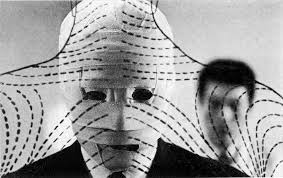If the heart is a lonely hunter, then the brain is a game of William Tell. It’s tough to hit the target, and sometimes missing can lead to horrible consequences.
From Tim Adams’ Guardian piece about neuroscientist Dr. Suzanne O’Sullivan’s new book concerning imaginary illnesses, It’s All in Your Head:
Some of its more avant-garde subjects have faced O’Sullivan in her treatment room. Her experience of this type of patient began when she was just qualified as a junior doctor, watching a woman she calls Yvonne being questioned by her consultant. Yvonne, after an accident in which she had been sprayed in the face with window-cleaning fluid, had convinced herself and her family that she was blind. After six months of tests doctors had found nothing wrong with her eyes. She was by this time on disability benefits with a full-time carer, unable to get around her house. O’Sullivan and her fellow junior doctors, certain she could see, found it hard not to suppress giggles as Yvonne described her condition. They were reprimanded by the consultant. The cause of Yvonne’s blindness was psychological rather than physical – a response, it later seemed, to unbearable tensions in her marriage. It was to her no less real, however: she had subconsciously persuaded herself that she had lost her sight. After six months of psychiatric help and family counselling, O’Sullivan reports, Yvonne’s vision was restored.
It is O’Sullivan’s contention that “psychosomatic disorders are physical symptoms that mask emotional distress”. In the 19th century sufferers of such conditions were paraded by the celebrated neurologist Jean-Marie Charcot, who revealed to sold-out audiences how such states could be induced by suggestion and hypnosis. Even with fMRI scans and advances in neural imaging, the means by which thought alone can conjure physical pain is an unfathomable mystery. “One day a woman loses the power of speech entirely and the next she speaks in the voice of a child. A girl has a lump in her throat and becomes convinced she cannot swallow. Eyes close involuntarily and no amount of coaxing will open them.” Each of O’Sullivan’s patients is different; however, buried trauma or stress (itself an undefined cause and effect) seems often to be a trigger.•
Tags: Suzanne O'Sullivan, Tim Adams

